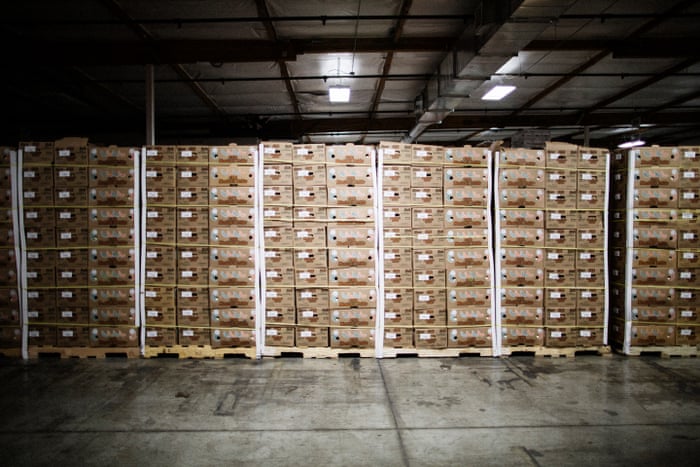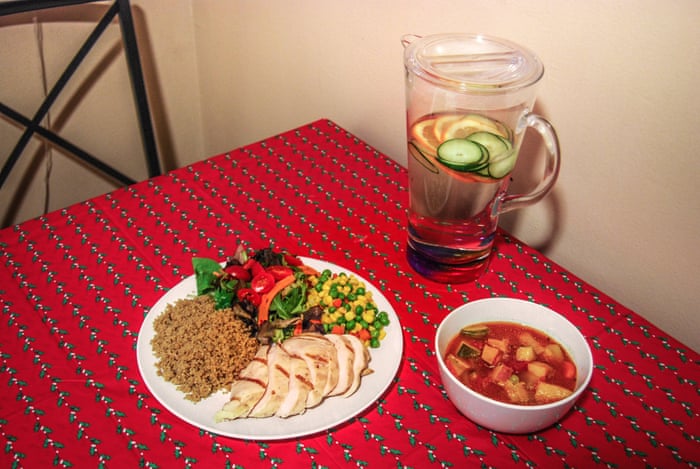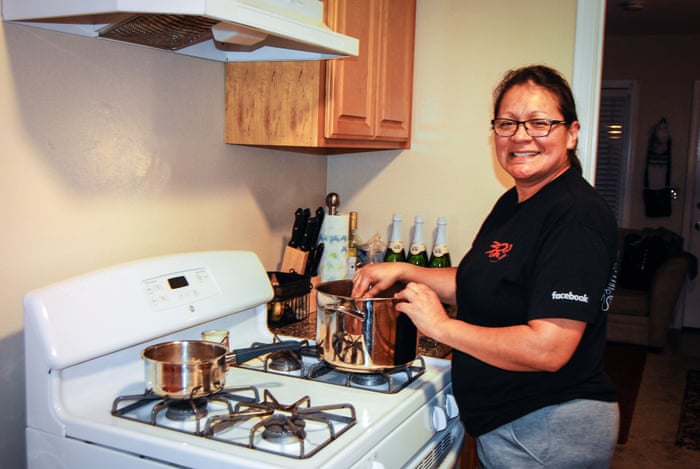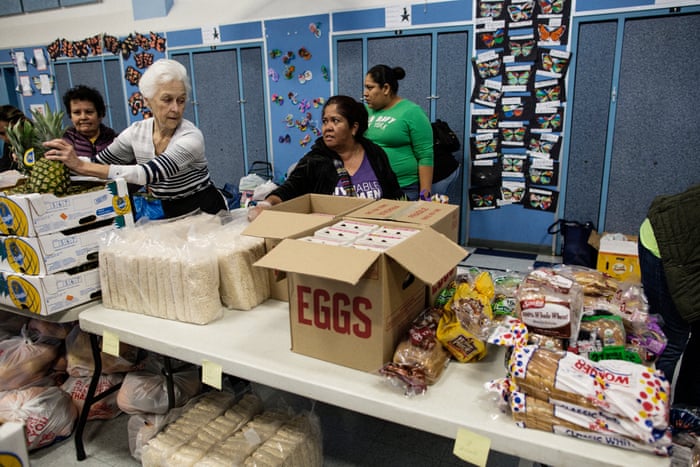
The Silicon Valley Paradox: One In Four People Are At Risk of Hunger
Karla Peralta is surrounded by food. As a line cook in Facebook’s cafeteria, she spends her days preparing free meals for the tech firm’s staff. She’s worked in kitchens for most of her 30 years in the US, building a life in Silicon Valley as a single mother raising two daughters.
But at home, food is a different story. The region’s soaring rents and high cost-of-living means that even with a full-time job, putting food on the table hasn’t been simple. Over the years she has struggled to afford groceries – at one point feeding her family of three with food stamps that amounted to $75 a week, about half what the government describes as a “thrifty” food budget. “I was thinking, when am I going to get through this?” she said.
In a region famed for its foodie culture, where the well-heeled can dine on gold-flecked steaks, $500 tasting menus and $29 loaves of bread, hunger is alarmingly widespread, according to a new study shared exclusively with the Guardian.
One in four people in Silicon Valley are at risk of hunger, researchers at the Second Harvest food bank have found. Using hundreds of community interviews and data modeling, a new study suggests that 26.8% of the population – almost 720,000 people – qualify as “food insecure” based on risk factors such as missing meals, relying on food banks or food stamps, borrowing money for food, or neglecting bills and rent in order to buy groceries. Nearly a quarter are families with children.
“We call it the Silicon Valley paradox,” says Steve Brennan, the food bank’s marketing director. “As the economy gets better we seem to be serving more people.” Since the recession, Second Harvest has seen demand spike by 46%.
The bank is at the center of the Silicon Valley boom – both literally and figuratively. It sits just half a mile from Cisco’s headquarters and counts Facebook’s Sheryl Sandberg among its major donors. But the need it serves is exacerbated by this industry’s wealth; as high-paying tech firms move in, the cost of living rises for everyone else.
Food insecurity often accompanies other poverty indicators, such as homelessness. San Jose, Silicon Valley’s largest city, had a homeless population of more than 4,000 people during a recent count. They are hungry, too: research conducted by the Health Trust, a local not-for-profit, found food resources available to them are scattered and inadequate.
These days Peralta earns too much to qualify for food stamps, but not enough not to worry. She pays $2,000 a month – or three-quarters of her paycheck – to rent the small apartment she shares with her youngest daughter. “Even just the two of us, it’s still a struggle.” So once a month, she picks up supplies at the food bank to supplement what she buys at the store.
She isn’t one to complain, but acknowledges the vast gulf between the needs of Facebook employees and contract workers such as herself. “The first thing they do [for Facebook employees] is buy you an iPhone and an Apple computer, and all these other benefits,” she laughs. “It’s like, wow.”







Because poverty is often shrouded in shame, their clients’ situations can come as a surprise. “Often we think of somebody visibly hungry, the traditional homeless person,” Brennan said. “But this study is putting light on the non-traditional homeless: people living in their car or a garage, working people who have to choose between rent and food, people without access to a kitchen.”
He added, “You’re not thinking when you pick up your shirts from dry cleaning, or getting your landscaping done, or going to a restaurant, or getting your child cared for, ‘is that person hungry?’ It’s very easy to assume they are fine.”
Matt Sciamanna is the sort of person you would assume is fine. He’s young, clever, and a recent graduate from San Jose State University. Yet here on campus, he says, food insecurity is a daily problem. Students, and even part-time professors, have been known to sleep in their cars or couch surf to save money. Sciamanna, who works on the Student Hunger Committee, says a survey of more than 4,000 students found about half have skipped meals due to the cost.
"FIGHTING FOR FREEDOM AND LIBERTY"
and is protected speech pursuant to the "unalienable rights" of all men, and the First (and Second) Amendment to the Constitution of the United States of America. In God we trust.
Stand Up To Government Corruption and Hypocrisy
NEVER FORGET THE SACRIFICES
BY OUR VETERANS Note: We at The Friends Of Liberty cannot make any warranties about the completeness, reliability and accuracy of this information.
Don't forget to follow the Friends Of Liberty on Facebook and our Page also Pinterest , Twitter , Tumblr and Google Plus PLEASE help spread the word by sharing our articles on your favorite social networks.
LibertygroupFreedom 

The Friends Of Liberty is a non-partisan, non-profit organization with the mission to Educate, protect and defend individual freedoms and individual rights.
Support the Trump Presidency and help us fight Liberal Media Bias. Please LIKE and SHARE this story on Facebook or Twitter.
WE THE PEOPLE
TOGETHER WE WILL MAKE AMERICA GREAT AGAIN!
Join The Resistance and Share This Article Now!

TOGETHER WE WILL MAKE AMERICA GREAT AGAIN!
Help us spread the word about Friends Of Liberty Blog we're reaching millions help us reach millions more.
Help us spread the word about Friends Of Liberty Blog we're reaching millions help us reach millions more.
‼️️ ♻️ PLEASE SHARE ♻️ ‼️️
Please SHARE this now! The Crooked Liberal Media will hide and distort the TRUTH. It’s up to us, Trump social media warriors, to get the truth out. If we don’t, no one will!
Share this story on Facebook and let us know because we want to hear YOUR voice!
Please SHARE this now! The Crooked Liberal Media will hide and distort the TRUTH. It’s up to us, Trump social media warriors, to get the truth out. If we don’t, no one will!
Share this story on Facebook and let us know because we want to hear YOUR voice!




No comments:
Post a Comment